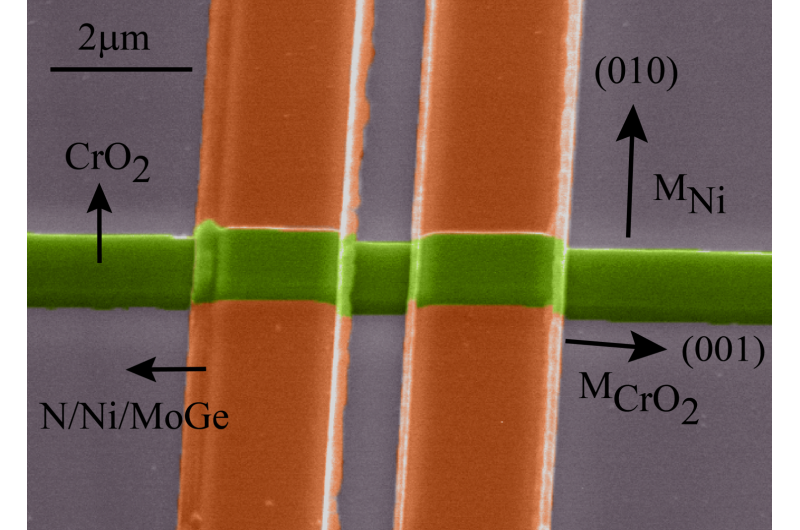Record distance for alternative super-current

Researchers have discovered that electrons that spin synchronously around their axes remain superconductive across large distances within magnetic chrome dioxide. Electric current from these electrons can flip small magnets, and its superconductive version could form the basis of a hard drive without energy loss. The study has been published in Physical Review X.
In Leiden in 1911, Nobel Prize-winner Heike Kamerlingh Onnes discovered the principle of superconduction; electric current flowing through ice-cold metal without any resistance. This super-current can transport electricity or power an electromagnet without energy loss, an essential property for MRI scanners, maglev trains and nuclear fusion reactors.
Half a century later, scientists discovered that electrons appear to form pairs, enabling the super-current to escape the classical rules of electricity. Physicists assumed that both electrons spin around their axes in opposite directions, so that the pairs have a net 'spin' of zero. Around the turn of the century, that assumption proved to be premature. Super-currents can, indeed, have a net 'spin,' and even possibly manipulate small magnets.
Leiden physicist Prof. Jan Aarts and his group have now created a wire made of chrome dioxide, which only carries currents with 'spin.' They cooled it to a superconducting state and measured a particularly strong current of a billion A/m2. That's powerful enough to flip magnets, potentially facilitating future hard drives without energy loss. Moreover, the super-current covered a record distance of 600 nanometer. This seems like a small stretch—bacteria are bigger—but it lets electron pairs survive long enough for practical use.
More information: Amrita Singh et al. High-QualityNanowires for Dissipation-less Spintronics, Physical Review X (2016). DOI: 10.1103/PhysRevX.6.041012
Journal information: Physical Review X
Provided by Leiden Institute of Physics



















